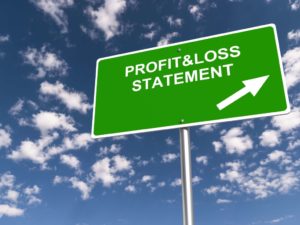Content

For businesses, leverage can aid with investments that would otherwise be beyond their means, such as purchasing a new building or investing in new machinery, equipment or technology. Beyond that, leverage can help a business that’s running out of cash for daily operations, or experiencing a spike in sales, without the product necessary to fulfill orders. It shows the ratio of the company’s total assets to the part owned by shareholders. The higher the ratio, the more debt a company uses in its capital structure.

It is calculated as the percentage change in EPS divided by a percentage change in EBIT. In contrast, if funds are raised through equity shares, then the dividend to be paid is not a fixed charge. For example, if funds are raised through long-term debts such as bonds and debentures, these instruments carry fixed charges in the form of interest. For loans tied to collateral, you could lose the item if you can’t cover the payments.
What are the benefits and risks involved in using financial leverage?
The company generates a profit before interests and taxes of $20000 annually. The total assets amounted to $145000, and the liabilities were $75000. A company that has a high level of financial leverage is said to be highly leveraged, meaning that it has a significant amount of debt relative to its equity. This can increase the risk of the company’s financial performance, but it can also increase the potential return on investment for shareholders. One bad event can damage a company’s credit rating and make it difficult to get future debt financing. However, business entities can use financial leverage to improve their credit rating.
Otherwise, financial leverage covers any personal investment that’s made with borrowed funds. Leverage in personal investing involves using borrowed funds to buy into an investment. Lots of companies, especially startups, continually seek leverage in the form of investor capital they can use to grow their businesses and meet important financial leverage is described as milestones. In a business where there are low barriers to entry, revenues and profits are more likely to fluctuate than in a business with high barriers to entry. The fluctuations in revenues may easily push a company into bankruptcy since it will be unable to meet its rising debt obligations and pay its operating expenses.
What Are the Different Kinds of Leverage?
Banks may decline to renew mortgages when the value of real estate declines below the debt’s principal. Even if cash flows and profits are sufficient to maintain the ongoing borrowing costs, loans may be called-in. ABC Ltd. expanded its business unit by investing $ out of which $50000 was acquired through debts. The company issued 1500 equity shares of $100 each for the remaining amount.
Buying an investment property is a prime example of financial leverage. That may be a rental property that you maintain and lease out to tenants, which can create a steady flow of passive income each month. In this case, the goal is to turn a profit after buying a property, sprucing it up and putting it back on the market. While the Debt to Equity Ratio is the most commonly used leverage ratio, the above three ratios are also used frequently in corporate finance to measure a company’s leverage. The goal of DFL is to understand how sensitive a company’s EPS is based on changes to operating income.
Examples of leverage
Regardless, you’ll still be responsible for paying back whatever you borrow. This includes a home equity loan or line of credit, as well as a cash-out refinance. You might use it to cover home renovations, college costs, debt repayment or other major life expenses. Usually, the ratio exceeds the US average debt to equity ratio of 54.62%. Financial leverage is important as it creates opportunities for investors. That opportunity comes with risk, and it is often advised that new investors get a strong understanding of what leverage is and what potential downsides are before entering leveraged positions.

Company A and B wish to acquire an asset with an original cost of $1,000,000. Company A uses purely equity financing whilst Company B uses a mixture of 50% equity and 50% debt (financial leverage) to finance the purchase. With equity financing, there are no interest payments, whereas for debt financing, assume that the annual interest cost is at 5%. Leveraging can allow businesses and people to make investments that would otherwise be too expensive. It’s a strategy for expanding your returns and accelerating growth.
If you can’t make your mortgage payments, you’ll default and your lender will start the foreclosure process. And for entrepreneurs, if you use money from friends and family to fund a business and it fails, your relationships may sour if you can’t repay them the borrowed cash. Even worse, you could be subject to a lawsuit, depending on what sort of agreement you have in place. Company A and company B both manufacture soda pop in glass bottles. Both companies pay an annual rent, which is their only fixed expense.
